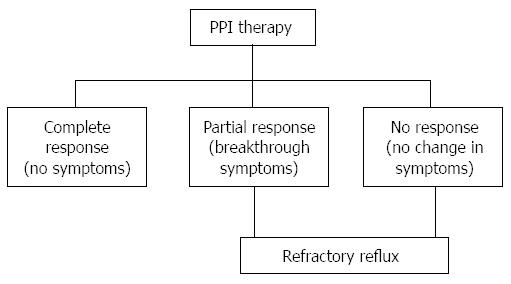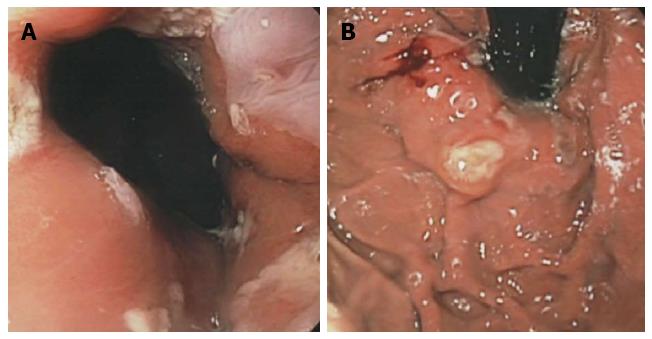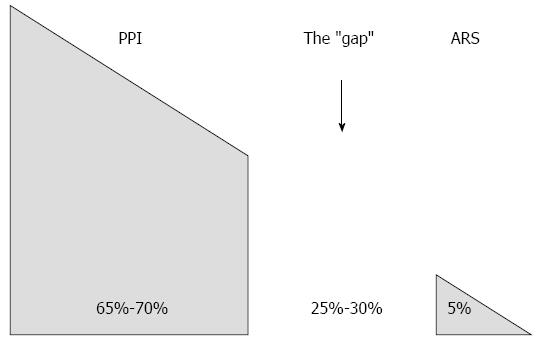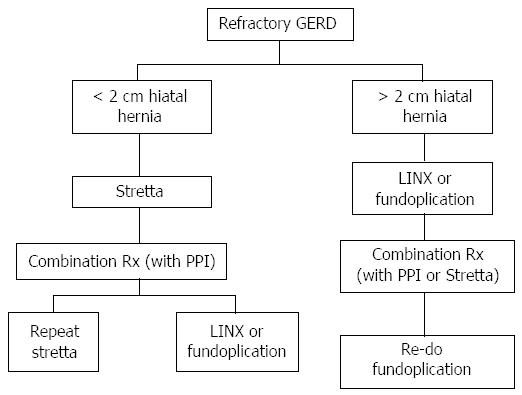Copyright
©2014 Baishideng Publishing Group Inc.
World J Gastroenterol. Jun 28, 2014; 20(24): 7730-7738
Published online Jun 28, 2014. doi: 10.3748/wjg.v20.i24.7730
Published online Jun 28, 2014. doi: 10.3748/wjg.v20.i24.7730
Figure 1 Possible outcomes of proton pump inhibitor therapy in the primary care management of gastroesophageal reflux disease.
PPI: Proton pump inhibitor.
Figure 2 Endoscopic appearance of the gastroesophageal junction immediately after Stretta.
Antegrade view of the squamo-columnar junction (A); retrograde view of the cardia (B). White coagulation marks are seen circumferentially in both images.
Figure 3 Stretta is an adjunct in the treatment of gastroesophageal reflux disease that spans the “gap” between proton pump inhibitor responders and surgical candidates.
PPI: Proton pump inhibitor; ARS: Anti-reflux surgery; “gap”: % of patients refractory to PPI not pursuing ARS.
Figure 4 Proposed algorithm for the management of patients with refractory gastroesophageal reflux disease.
GERD: Gastroesophageal reflux disease; PPI: Proton pump inhibitor.
- Citation: Triadafilopoulos G. Stretta: A valuable endoscopic treatment modality for gastroesophageal reflux disease. World J Gastroenterol 2014; 20(24): 7730-7738
- URL: https://www.wjgnet.com/1007-9327/full/v20/i24/7730.htm
- DOI: https://dx.doi.org/10.3748/wjg.v20.i24.7730












